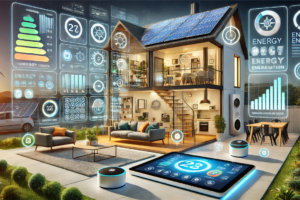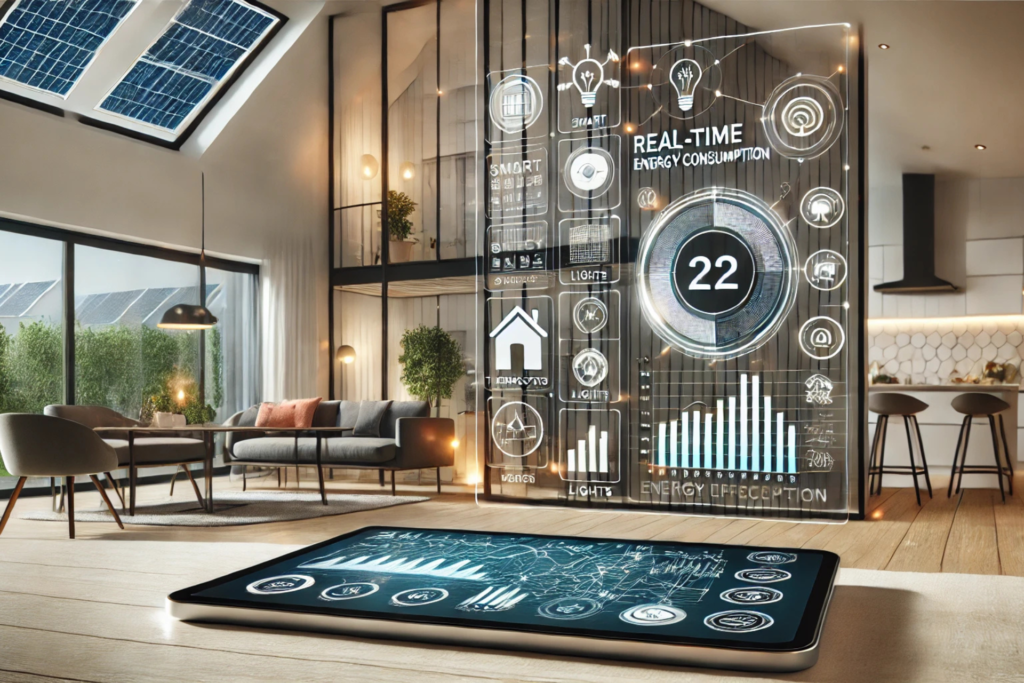A Smart Home Energy Management System also commonly referred to as SHEMS is a novel system used to manage energy in new-age homes. With connected thermostats and lighting systems, or even appliances, demands can be met, and in real time too since SHEMS allow for such adjustments. These systems can also interface with renewable power supply such as photovoltaic sources like solar power to increase energy optimization as well as sustainability. Homeowners are able to cut their operating costs and reduce their carbon imprint while preserving the neighborhoods aesthetics as well as fighting climate change through the reduction of emissions.
Mobile applications provide users with the ability to manage their home energy systems from the palm of the hand, enabling them to control, monitor or decide on their energy needs. Although SHEMS works for convenience and control it has its demerits such as cyber security issue, data privacy and system issues.
Understanding Smart Home Energy Management Systems: Components and Functionality
Automated Energy Management Systems (AEMS) monitor and control energy usage by different devices in real time in smart homes. Some parts include Smart meters and sensors primarily for recording the usage with the aim of enhancing efficiency. Homeowners who employ these technologies to decrease emissions while also decreasing the expense of resources are vital to SHEMS’s eventual sustainability.
SHEMS functions through communication with smart devices then regulating its usage according to users’ patterns and utility tariffs. The system also encompasses controls for lights, appliances, heating among other features that guarantee efficiency. This automation not only eradicates energy wastage but also brings about changes that allow homeowner to have access to automatic updates.

The Benefits of Smart Home Energy Systems with AI and Renewable Integration
A Smart Home Energy Management System (SHEMS) presents the following advantages: energy cost savings, energy efficiency enhancement. This is due to the fact that through an energy manager, homeowners can monitor an manages energy usage to ensure that it is well managed. This system assists in energy saver and reduction of impacts to the environment in manner such as wastage and economy bills.
Introducing renewable energy technologies such as photovoltaic into SHEMS also boosts the efficiency of system. The system optimizes resource utilization as green energy and normal electricity is equally incorporated and minimizes the utility of fossil energy. This integration make it possible for homeowners to control their energy consumption in an efficient manner while at thesame time promoting environmental conservation.
AI and ML in SHEMS increase energy efficiency and perform adjustments based on prediction of demand as well. These technologies allow the energy manager to make specific setting control decisions in real-time that maximize energy management efficiency. Through individual suggestions, the convenience of the EMS is enhanced, and energy use in the home is decreased to make it even wiser.
Building Blocks of Smart Home Energy Management: Devices, Monitoring, and Load Shifting
Smart devices or smart appliances are one of the main components of energy management systems of the organizations or households. These systems control items like thermostats and lighting; using these tools, companies facilitate their conformity to requirements like ISO for their energy, essential to decarbonization endeavours and enhancing the sustainability of electrical power networks.
Data gathering and management remain extensively important since they help monitor actual energy consumption and make adjustments depending on the demand response. Load shifting is accomplished through the assistance of the EMS in that energy use is shifted from peak hours in a bid to cut on the many costs as well as to avert putting undue pressure on the power grids. This guarantees proper using of energy and fosters the use of clean energy.
Smart Home Energy Management: Remote Control, Security Challenges, and Future Trends
Energy control and extension features in an energy management system can be controlled directly through its interface of a mobile App or via an RC unit. It establishes an energy management platform with real-time display to enable the user to make correct decisions with great ease. It plays dual role by providing convenience and flexibility in operations that in turn aids in cutting operating expenses and unnecessary power use for efficiency.
Nevertheless, security issues are still an obstacle that prevents the efficient use of this technology. When smart homes function by controlling the devices with SCADA systems, such weaknesses open homes to cyber risks. Privacy and security of information and from hacking are rationale goals for smart home energy control since lapses in either could erode consumer confidence and weaken system security.
As for the future, more complex forms of automation and AI based energy management systems aimed at cutting greenhouse gas emissions are expected. Better connectivity to renewable energy sources and advances in the energy management websites will allow the loading and energy systems to balance and optimize themselves and therefore making itself smarter and more sustainable in the end.


